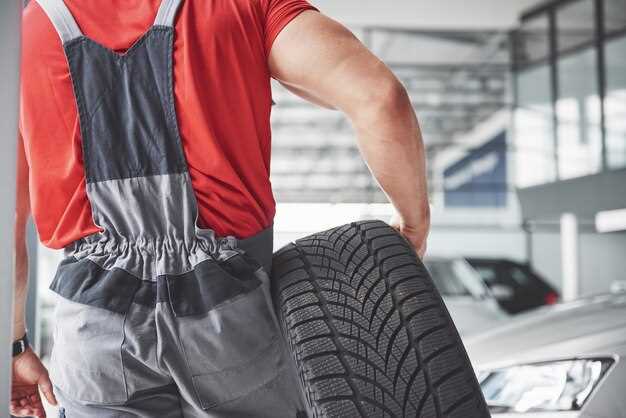
In the high-stakes world of racing, the performance of a vehicle can hinge on a variety of factors, but few elements are as critical as the choice of tires and their corresponding pressure. The right combination can enhance grip, improve handling, and significantly impact lap times. Understanding the interplay between tire pressure and compound selection is essential for teams looking to maximize their competitive edge.
The selection of tire compounds involves a balance between durability and performance. Softer compounds generally provide better grip but may wear out more quickly, while harder compounds tend to last longer at the expense of traction. Thus, strategies must also consider the specific racing conditions, including track temperature and surface type, making tire selection a nuanced process that requires both experience and analytical assessment.
Equally important is tire pressure, which affects the contact patch and overall performance of the tires. Properly adjusted tire pressure can enhance stability during cornering and braking, while inadequate pressure can lead to poor performance and increased wear. Therefore, teams must be diligent in monitoring and adjusting tire pressures throughout the race to adapt to changing conditions and maintain optimal performance levels.
How to Determine Optimal Tire Pressure for Different Racing Conditions

Finding the optimal tire pressure is essential for maximizing grip and performance on the track. Tire pressure influences tire contact with the surface, heat generation, and overall vehicle handling. Here’s how to assess the ideal pressure for varying racing conditions.
Several factors contribute to determining the right tire pressure:
- Track Surface: Different surfaces can significantly affect grip. For instance, a smooth asphalt track may require lower pressures to enhance surface contact and grip, while a rougher surface might benefit from higher pressures to avoid excessive tire deformation.
- Weather Conditions: Temperature affects tire performance. Warmer weather usually requires lower pressures, as hot tires tend to expand. In cooler conditions, slightly higher pressures protect against excess tire flexibility.
- Race Duration: Longer races often lead to heat buildup and tire wear. Starting with a slightly higher tire pressure can compensate for this increase during the race, maintaining optimal grip throughout.
- Car Setup: The weight distribution and suspension settings play a crucial role. A well-balanced setup requires precise tire pressure adjustments to ensure even tire wear and maximize grip.
To determine the best tire pressure, follow these steps:
- Initial Testing: Perform practice runs before the race to gather data on tire behavior. Monitor how the tires feel during cornering and acceleration.
- Tire Temperature Monitoring: Use infrared thermometers to measure tire temperatures after runs. Ideally, the temperature across the tire tread should be consistent. If the center is hotter than the edges, reduce pressure; if the edges are hotter, increase pressure.
- Adjust and Test: Make small adjustments to tire pressure based on initial observations. Test at each new setting to see how grip changes, especially during high-speed corners.
- Feedback Loop: Collect driver feedback concerning handling and grip after each adjustment. Continuous feedback helps in fine-tuning the ideal pressure for varying conditions.
Optimizing tire pressure is a dynamic process that requires diligence and adaptation. By paying attention to these factors and utilizing thorough testing, racers can achieve maximum grip, ensuring better performance on race day.
Choosing the Right Tire Compound Based on Track Surface and Weather

Selecting the appropriate tire compound is crucial for maximizing performance on the track. Different compounds offer varying levels of grip, durability, and heat sensitivity, which are influenced by both the track surface and weather conditions.
When evaluating the track surface, consider its texture and grip level. A coarse surface tends to offer more traction and can handle softer tire compounds effectively. However, if the track is smooth, harder compounds might be necessary to prevent excessive wear. Additionally, specific characteristics, such as asphalt or concrete, can affect how tires interact with the surface.
Weather conditions also play a pivotal role in tire selection. On a hot day, softer compounds might provide optimal grip, but they can wear out quickly, especially on abrasive surfaces. Conversely, cooler temperatures may necessitate harder compounds, as softer tires might struggle to reach their optimal operating temperature, leading to reduced performance. In wet conditions, specialized tires designed for rain can further enhance grip and prevent aquaplaning. The tread pattern becomes essential here, influencing water displacement and tire contact with the track.
Ultimately, understanding how different track conditions and weather patterns interact with tire compounds allows racers to make more informed decisions. This knowledge can lead to competitive advantages and improved race outcomes.
Balancing Grip and Longevity: Strategies for Tire Management During Races
Effective tire management is crucial in racing, as it directly impacts both grip and longevity. Teams must find a balance that maximizes performance without compromising tire life. Several strategies can be employed to achieve this balance.
1. Understanding Compound Characteristics: Different tire compounds offer various performance characteristics. Softer compounds typically provide better grip but wear out faster, whereas harder compounds might last longer but offer less traction. Teams should carefully select the compound based on track conditions and race strategy.
2. Adjusting Tire Pressure: Tire pressure plays a significant role in the performance and longevity of tires. Lowering tire pressure can enhance grip by increasing the contact patch with the track, while higher pressure may reduce rolling resistance. Finding the optimal pressure is essential, often requiring adjustments based on tire temperature and track conditions during the race.
3. Managing Track Evolution: As races progress, track conditions improve or evolve, which changes the grip levels. Teams must continually assess how tire performance fluctuates with track changes and adjust tire strategy accordingly. This may involve extending stints on a particular tire compound or switching to a different compound as the track rubbers in.
4. Implementing Driving Strategies: Driver behavior can heavily influence tire wear. Smooth driving that minimizes wheel spin and aggressive cornering can prolong tire life. Additionally, drivers should be mindful of their positioning on the track to optimize tire temperature, which significantly affects grip.
5. Monitoring Tire Wear: Regularly assessing tire wear throughout the race is crucial. Using telemetry and physical inspections, teams can track how much grip remains and decide when to pit for new tires. This helps avoid performance loss from excessive wear or a tire failure during critical race moments.
By employing these strategies, racing teams can effectively manage their tires, achieving a delicate balance between grip and longevity. Careful planning and real-time adjustments are essential elements for success on the track.












